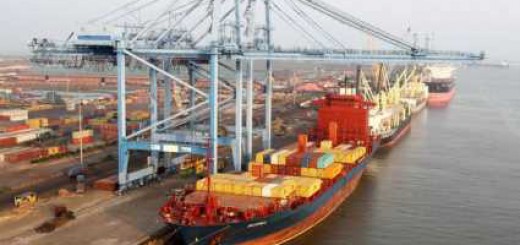Top 8 Logistics Software Solutions for Efficient Operations
It’s impossible to overstate how much-specialised software contributes to contemporary logistics. Such dedicated Logistics Software enables businesses to efficiently handle the whole spectrum of logistics operations, including ordering, shipping, item storage, product quality control, demand forecasting, route optimization, and a variety of other critical business procedures. All of this combined enables logistics companies to increase efficiency, cut costs and time, and become more competitive in the marketplace.
The logistics software market is rapidly expanding. This applies to both off-the-shelf and bespoke software solutions. The latter goods are built with your company’s unique characteristics in mind. As a result, you will obtain the most efficient solution. We’ll look at the most popular types of software used in logistics and offer some practical tips for designing your own logistics management software.
8 Types of Logistics Software Solutions
Nowadays, the industry provides a vast range of software solutions geared to address company difficulties in any segment. When it comes to logistics, we may categorize numerous major product kinds as follows.
Transportation Management Systems (TMS):-
Transportation Management Systems (TMS) manage duties such as route optimization, carrier selection, and real-time tracking. Their mission is to guarantee that items are carried efficiently, affordably, and transparently.
Warehouse Management Systems (WMS):-
Warehouse Management Systems (WMS) improve warehouse operations. They are in charge of inventory tracking, streamlining product reception and placing, assisting with shipment pick-up and packaging, and monitoring worker productivity.
Route Optimization Software:-
Route Optimization Software guarantees that delivery routes are effective and punctual. It adjusts to real-time conditions, employs predictive analytics, and optimizes multi-stop deliveries.
Inventory Management Systems:-
Inventory Management Systems include demand forecasts, reorder point notifications, and multi-location management. They frequently integrate with barcoding and RFID instruments to ensure precise monitoring.
Fleet Management Systems:-
Fleet Management Systems are designed for businesses with large fleets of cars and focus on vehicle maintenance, fuel management, driver monitoring, and GPS-based route planning.
Supply Chain Management (SCM):-
Supply Chain Management (SCM) handles a company’s whole supply chain. It interacts with suppliers, conducts procurement, and offers real-time inventory visibility.
Cargo and Freight Monitoring Software:-
Cargo and Freight Monitoring Software delivers real-time shipment status data to stakeholders. They employ GPS for location tracking and provide capabilities like temperature monitoring for delicate cargo.
Barcode and RFID Scanning Software:-
Barcode and RFID Scanning Software allows for precise inventory and asset tracking. When used with systems such as WMS, it speeds up data collecting and eliminates manual mistakes.
Of course, this list of available software is far from exhaustive, but it addresses the majority of the company’s demands in this field. Furthermore, if you create a customized product, you may incorporate all of the features you want in virtually any combination.
Also Read:- 7 Effective Techniques for Inventory Management
How do You Create Custom Logistics Management Software?
With an organized and methodical approach to software product development, you are more likely to achieve the greatest outcomes while making the most of your given money. The following is a step-by-step procedure for developing bespoke logistics software:
Determine the Objectives and Needs:- To begin, describe your goals for using logistics management software. During this phase, you should gather detailed requirements for the software product, identify current pain areas, and define your software scope, users, and major goals. Furthermore, before you get into creation, you may find it useful to undertake some market research.
Select the Right Technology Stack:- To create effective and useful software (not limited to logistics), it is critical to select a suitable technology stack. You should choose the appropriate programming languages, auxiliary tools, and frameworks.
Development Phase:- That is when the actual development process begins. The jobs are spread among the development team members (mainly frontend and backend). At the same time, experienced people must be included since the importance of effective development techniques cannot be overstated. This strategy will provide a scalable, dependable, and secure software product.
Third-party integration (API):- To expand the capability of logistics software, you must integrate third-party tools or apps. They might be GPS tracking systems, billing platforms, or enterprise resource planning software. The primary goal here is to provide continuous data interchange between built-in software modules and external systems.
Quality Assurance (Testing):- A rigorous testing step ensures that your program is free of bugs and performs properly. During the QA phase, real-life events are recreated to determine how well your product functions. Furthermore, during the testing process, potential users might submit crucial input.
Product Deployment:- Once you have successfully tested your program, it will be ready for deployment in a functional environment. It might be a one-time procedure, but it usually occurs in stages. Furthermore, it is critical to offer users the essential reference materials or manuals and ensure that they can swiftly adjust to a new system.
Conclusion
In summary, specialized software is crucial for enhancing efficiency and competitiveness in logistics. By understanding the various types of software available and following a structured approach to developing custom logistics management solutions, businesses can effectively address their unique challenges. Investing in tailored software not only streamlines operations but also maximizes productivity, ultimately leading to improved profitability and customer satisfaction in the dynamic logistics landscape.




Recent Comments